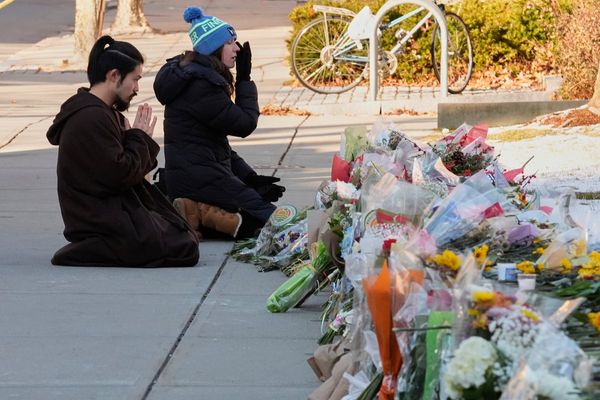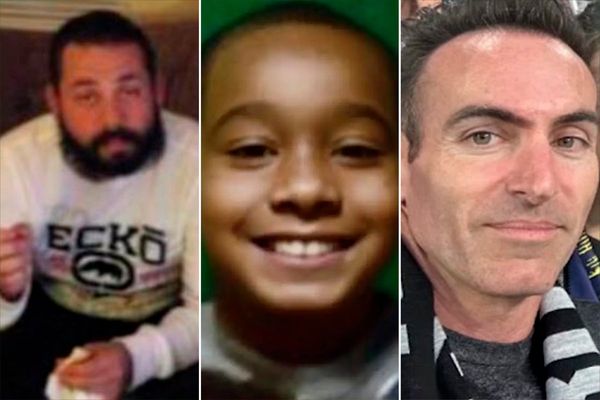
When we think about poverty in America, a specific image might come to mind, but the reality is often far more complex and widespread than we assume. The data reveals a story that challenges stereotypes and highlights systemic issues affecting millions of our neighbors. Understanding the true nature of economic hardship is the first step toward addressing it effectively. This isn’t just about numbers; it’s about the daily lives of families and children across the nation. Prepare to see a side of the American economy that is often overlooked but deeply impacts the fabric of our country.
1. Most Poor People Are Not Unemployed
A common misconception is that people in poverty do not work, but this is far from the truth. The reality is that a significant majority of those living below the poverty line are part of working families. These individuals are often stuck in low-wage jobs with inconsistent hours and few, if any, benefits. They are the “working poor,” who despite their efforts, cannot earn enough to escape the cycle of poverty in America. This highlights that employment alone is not always a pathway to financial stability.
2. The Majority of Poor People Are White
While poverty rates are disproportionately higher for minority groups, the largest number of people experiencing poverty in America are white. In terms of sheer numbers, non-Hispanic white people represent the biggest demographic group living below the poverty line. This fact often surprises people because it contradicts the racialized narratives frequently associated with poverty. It underscores that economic instability is an issue that crosses racial lines and affects a wide swath of the American population. Focusing only on one group misses the full picture of the crisis.
3. Children Are Disproportionately Affected
Children, the most vulnerable members of our society, experience poverty at a much higher rate than adults. Nearly one in six American children lives in poverty, which can have lifelong consequences for their health, education, and future earning potential. Growing up in a low-income household is a strong predictor of future economic struggles, creating a cycle that is difficult to break. Addressing poverty in America is therefore a critical investment in the nation’s future generations. The impact of childhood poverty extends far beyond the individual family.
4. Poverty Is Not Just an Urban Problem
While we often associate poverty with inner-city neighborhoods, the poverty rate in rural areas is actually higher. Rural communities face unique challenges, including limited job opportunities, lack of access to transportation, and fewer social services. Many of these areas have never recovered from the loss of manufacturing and agricultural jobs decades ago. This geographic diversity of poverty in America means that solutions must be tailored to different community needs. The struggles of the rural poor are often invisible in our national conversation.
5. A Sudden Crisis Is a Common Cause
For many families, poverty is not a chronic condition but a sudden and unexpected event. A job loss, a medical emergency, or a family breakup can quickly plunge a household into financial distress. Most Americans have insufficient savings to cover an unexpected $1,000 expense, leaving them vulnerable to a single setback. This fragility reveals that the line between financial stability and hardship is thinner than many believe. The lack of a robust safety net makes these personal crises economically catastrophic for millions.
6. Women Are More Likely to Be Poor
A distinct gender gap exists when it comes to poverty in America, with women experiencing higher rates of poverty than men. This is driven by several factors, including the persistent gender wage gap, the responsibilities of single motherhood, and time taken out of the workforce for caregiving. Elderly women are particularly vulnerable, often due to lower lifetime earnings and survivor’s benefits. These economic disparities show that gender inequality is a significant driver of poverty. Addressing this requires policies that support women’s economic empowerment.
7. The Official Poverty Measure Is Outdated
The formula used to calculate the official poverty line was developed in the 1960s and is based on the cost of food. It assumes that families spend about one-third of their income on food, which is no longer accurate today. Crucially, the measure does not account for major expenses like housing, healthcare, or childcare, nor does it factor in regional differences in the cost of living. This means the official statistics significantly underestimate the true number of people experiencing poverty in America. A more accurate measure would reveal an even deeper national crisis.
8. The U.S. Has High Poverty Compared to Other Developed Nations
Among developed, industrialized nations, the United States has one of the highest rates of relative poverty, especially among children. Many other wealthy countries have stronger social safety nets, such as universal healthcare, subsidized childcare, and more generous unemployment benefits. These policies help cushion citizens from economic shocks and reduce overall poverty levels. The American model, with its emphasis on individual responsibility, results in more people falling through the cracks. This international comparison challenges the idea of American exceptionalism in a stark way.
9. Housing Costs Are a Major Driver
In many parts of the country, the high cost of housing is a primary reason families fall into poverty. There is not a single state in America where a person working full-time at the federal minimum wage can afford a modest two-bedroom apartment. This forces families to spend a disproportionate amount of their income on rent, leaving little for food, healthcare, or savings. The lack of affordable housing is a fundamental barrier to economic stability. It’s a crisis that directly contributes to the overarching problem of poverty in America.
10. Food Insecurity Is Widespread
Millions of Americans, including children and seniors, live in food-insecure households, meaning they lack consistent access to enough food for an active, healthy life. This is not because of a lack of food, but because of financial constraints. Many working-poor families must choose between paying for rent, medicine, or groceries. Food insecurity has severe consequences for physical and mental health, particularly for developing children. It is a harsh and immediate symptom of economic distress.
11. Poverty Impacts Physical Health
Living in poverty has a direct and detrimental effect on a person’s physical health and life expectancy. The stress of financial instability, combined with poor nutrition and inadequate healthcare, leads to higher rates of chronic illnesses like diabetes, heart disease, and obesity. People in low-income neighborhoods often live in environments with more pollution and less access to safe recreational spaces. This health gap means that the wealthiest Americans live, on average, more than a decade longer than the poorest. It’s a clear sign that wealth and health are inextricably linked.
12. The Minimum Wage Has Not Kept Pace
If the federal minimum wage had kept pace with inflation and productivity since the 1960s, it would be more than double what it is today. The current federal minimum wage is a poverty-level wage, meaning a full-time worker earning it cannot keep a family out of poverty. While many states have raised their own minimum wages, the federal standard remains stagnant, trapping millions in low-paying work. This stagnation is a key policy failure contributing to the persistence of the working poor. It demonstrates a structural problem in our labor market.
A Picture of Modern Hardship
The narrative of poverty in America is not one of laziness but of systemic barriers, from stagnant wages to the high cost of basic necessities. The data paints a clear picture of working families struggling to get by and a social safety net that is failing to catch them. Recognizing these surprising truths is essential if we are to move beyond stereotypes and work toward meaningful, effective solutions that address the root causes of economic hardship in our nation.
Which of these facts about poverty in America surprised you the most? Share your thoughts in the comments below.
Read More:
10 Times It’s Okay to Use &Go Fund Me& to Raise Money
The Middle Class Can’t Keep Up—Here’s Where Their Money Is Really Going
The post 12 Surprising Facts About Poverty in America appeared first on Clever Dude Personal Finance & Money.







